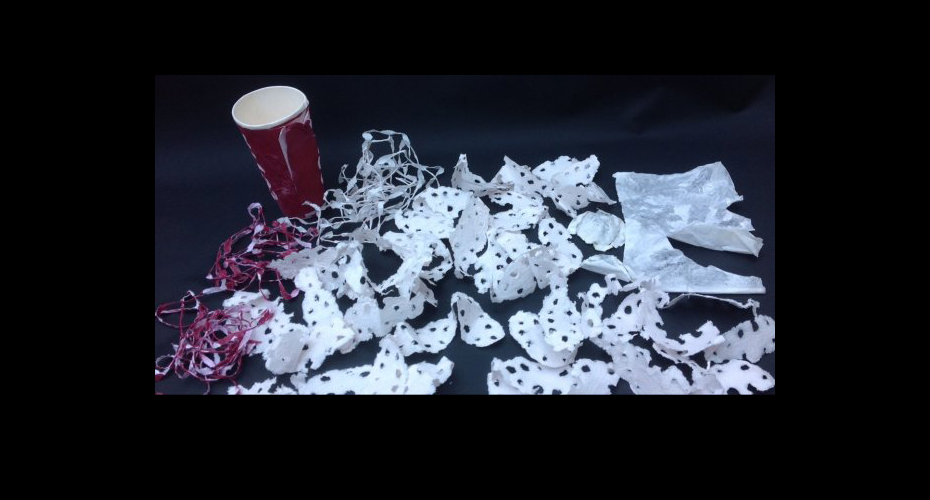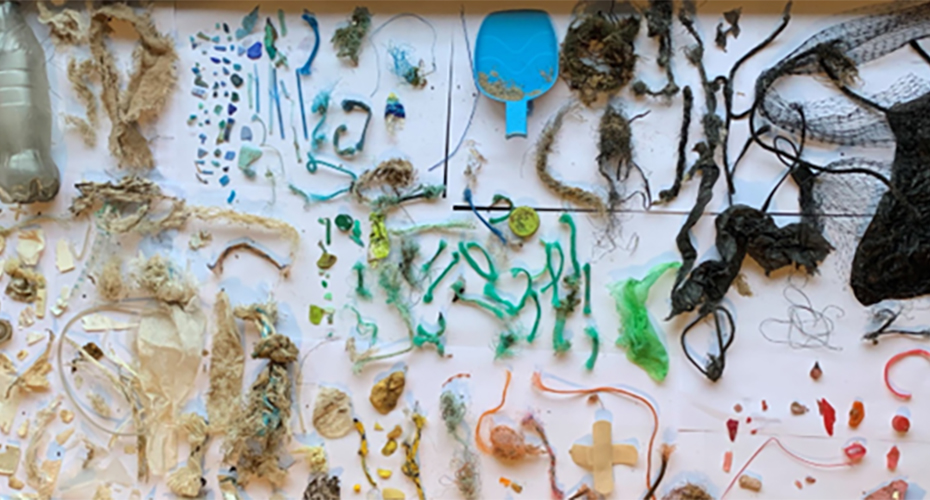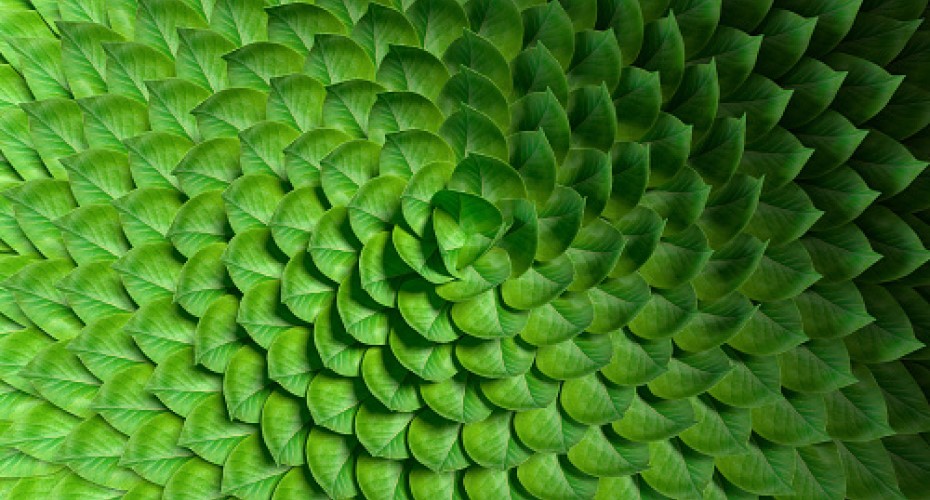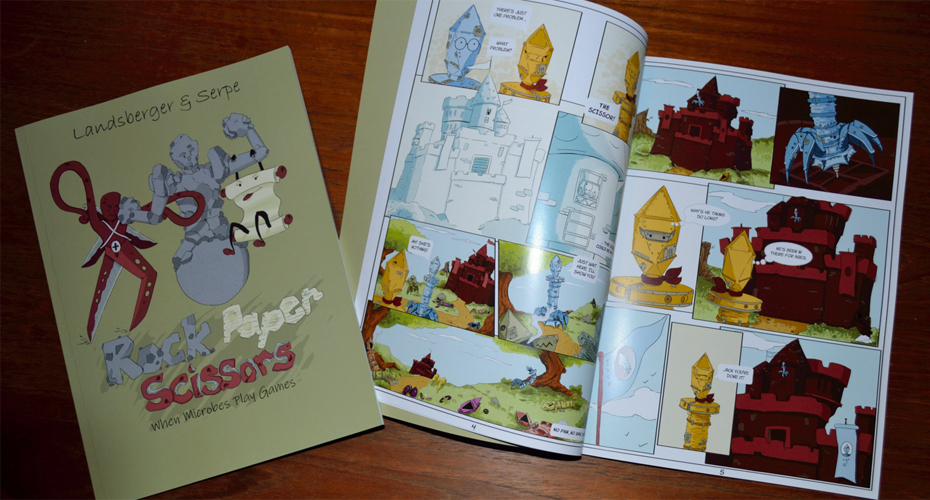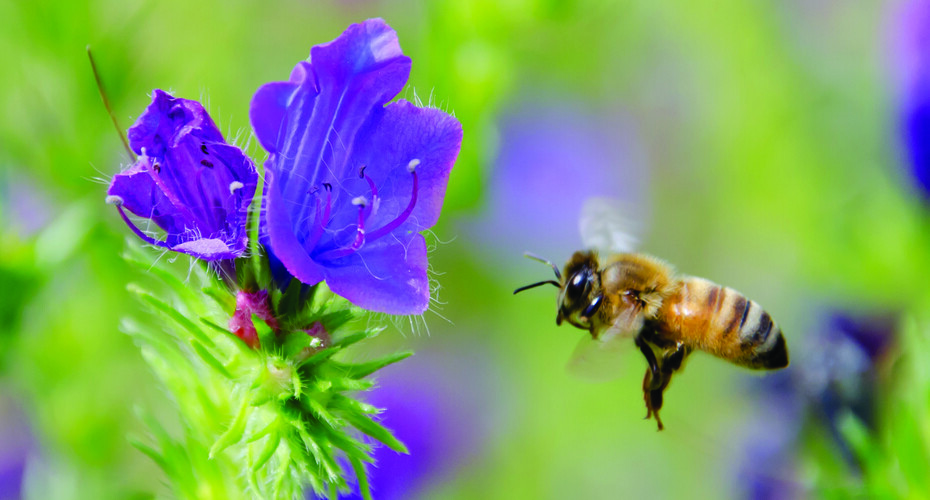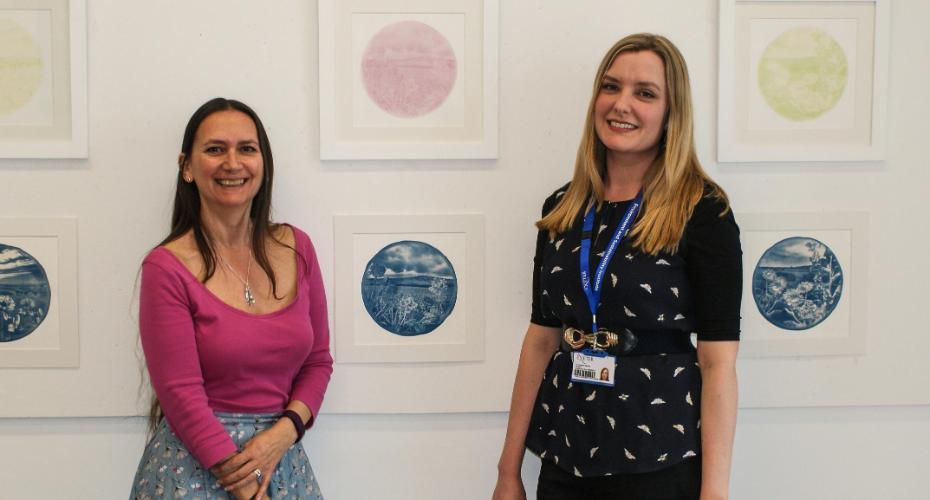- Home
- Our institutes
- Environment and Sustainability Institute
- Working together
- FX Creative Exchange
The Creative Exchange Programme
The FX Creative Exchange is an exciting transdisciplinary incubator programme supporting collaborations between early-career/emerging researchers across the University of Exeter and Falmouth University. The programme aims to supports the development of a shared research culture around the themes of ecology, creativity, sustainability, and environment. This is a renewed programme, building on a decade of creative exchange collaborations. To find out more about this new phase of the Creative Exchange please visit the University of Exeter Arts and Culture website.
FX Creative Exchange is co-funded through a partnership between Exeter’s Environment and Sustainability Institute (ESI), Falmouth University, and Exeter Arts and Culture. You can access a full archive of Creative Exchange collaborations 2013-2023 below.
If you would be like to be kept in the loop about FX Creative Exchange events and opportunities, please contact artsandculture@exeter.ac.uk.
Previous collaborations
Mapping Emergence - Creatively Exploring the World of Social Insects
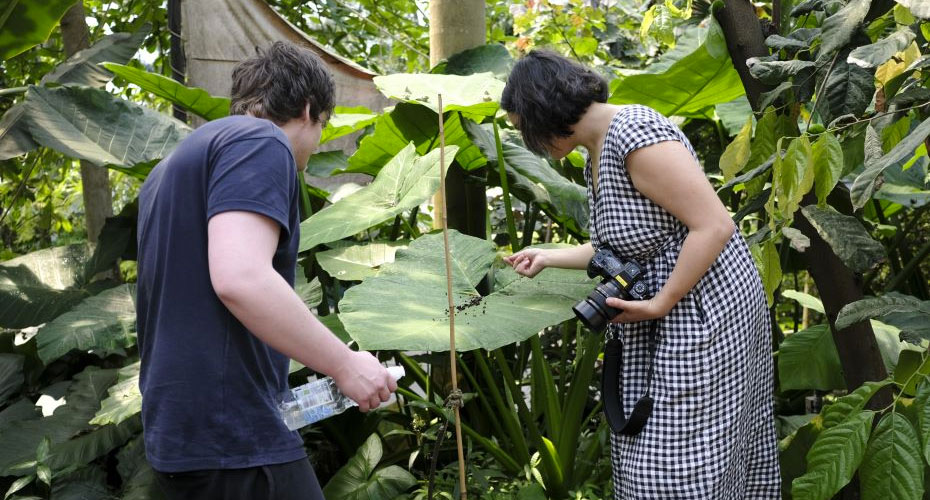
University of Exeter Research Fellow, Thomas O'Shea-Wheller, and Falmouth University Lecturer in Photography, Catarina Fontoura, reflect on their fascinating collaboration co-creating artworks with ants as part of the pilot FX Creative Exchange programme.
This exciting project which took place between May and July 2023 saw the worlds of art and science collide to explore creativity, collective intelligence, and self-organisation amongst a diverse array of social insect species in the UK.
To find out more and read the full article visit the University of Exeter’s Arts and Culture website.
FX Creative Exchange Pilot Programme 2023
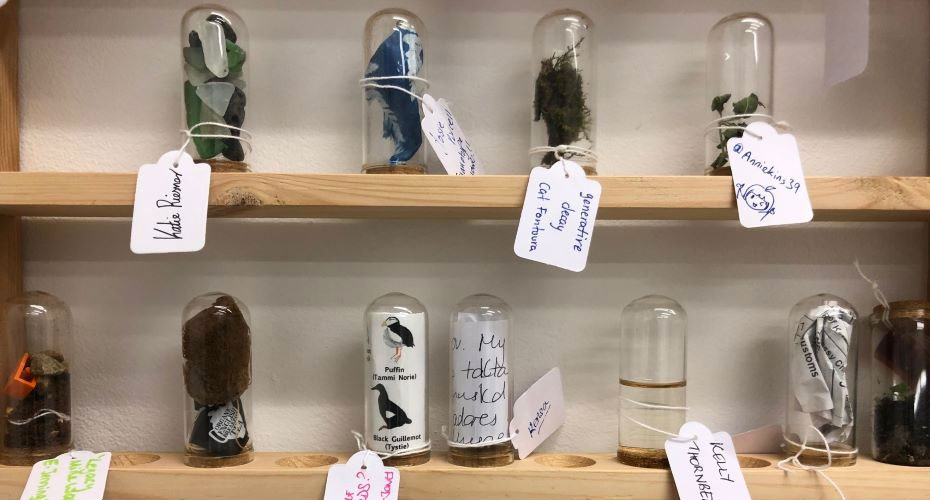
The FX Creative Exchange is an exciting transdisciplinary incubator programme supporting collaborations between early-career/emerging researchers across Falmouth and Exeter Universities. The programme aims to supports the development of a shared research culture around the themes of ecology, creativity, sustainability, and environment.
The programme is co-funded through a partnership between Exeter’s Environment and Sustainability Institute (ESI), Falmouth University, and Exeter Arts and Culture. This is a pilot phase of a renewed FX Creative Exchange programme, building on a decade of creative collaborations hosted by the ESI.
Home/Land
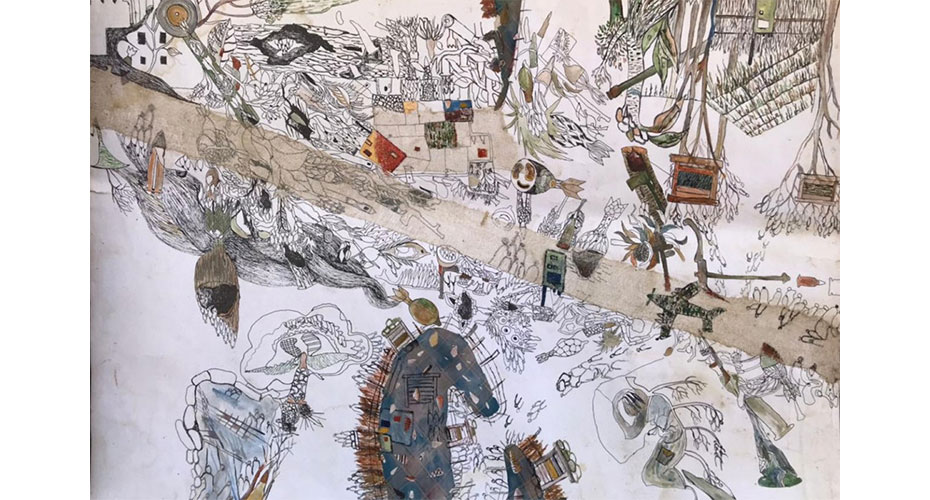
3rd - 28th March 2023. Six artists from Jaffna explore memories of home and experiences of loss in the aftermath of the civil war in Sri Lanka. The exhibition forms part of an international partnership between researchers at the University of Exeter (HaSS Cornwall), University of Leicester, Museum of London Archaeology and the Arts Faculty at the University of Jaffna, Sri Lanka, who together have been collaborating on a project entitled Identity, place and community: archaeologies of the recent past in post-war Jaffna, Sri Lanka. An online version of the exhibition can be viewed via the University of Exeter Arts & Culture website.
Special Event: On 7 March 2023, 2.30pm - 4.30pm, in the ESI Building Professor Shanaathanan Thamotharampillai and an invited panel discussed the exhibition in conversation, with broader themes of heritage, identity, land and loss.
Facilitated Industrial Decay: A Shadow Side of Urban Riparian rehabilitation
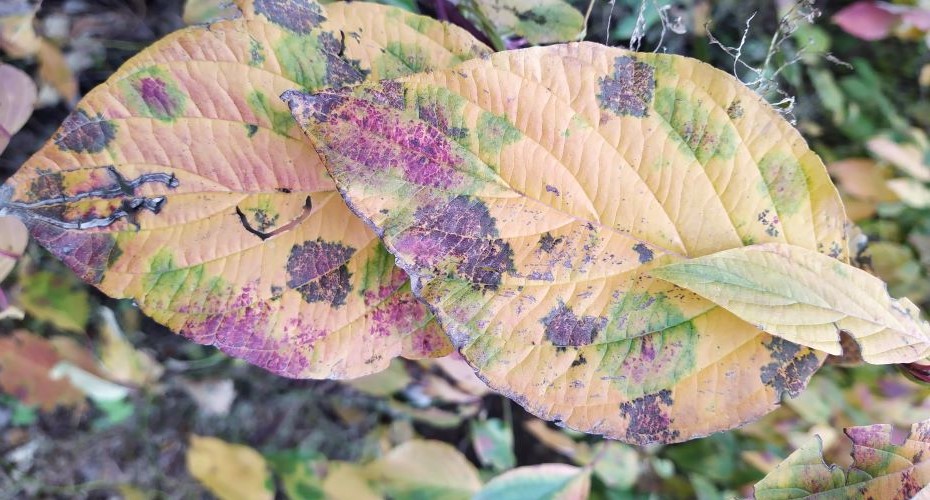
From January – February 2023 ESI will host Madeline Donald, a visiting PhD student from UBC Okanogan. Madeline’s research is an investigation into Brandt’s Creek, in Kelowna, British Columbia, unceded and occupied syilx territory, and the riparian beings it supports. This creek came to into being as a result of Kelowna’s early colonial industrialization, a process that partitioned and paved over the expansive and ecologically complex floodplain that preceded the city, setting specific courses for water to flow through. Presently, the city’s waterways do not have the capacity to accommodate for current, let alone expected flows. Madeline is therefore asking the question, ‘What does Brandt’s Creek need in order to be(come) its most bountiful and vibrant self given the past histories, current policy ecology, and future needs of its diverse riparian communities?’
Madeline will be working from the ESI Creative Exchange Studio, displaying a selection of maps and photographs from this research to date and is keen to engage with colleagues interested in the ecocultural significance of material change and transformation.
RENEWAL - EXE/FAL Creative Exchange
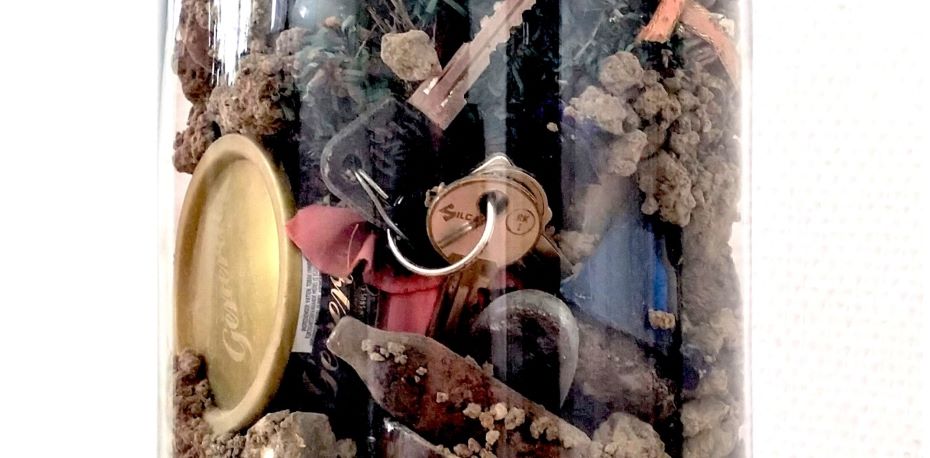
Over the past decade the ESI Creative Exchange programme has facilitated dozens of collaborations between creative practitioners and researchers on the University of Exeter's Cornwall Campuses. On 16 November 2022 the ESI, Falmouth University and Arts & Culture Exeter hosted an event to imagine what the next 10 years might hold for the programme. RENEWAL EXE/FAL CREATIVE EXCHANGE was an opportunity for researchers and students from Falmouth University and the University of Exeter to discuss the renewal of the Creative Exchange programme as a joint Exeter/Falmouth initiative.
Research staff and students from both universities were invited to join an open conversation over lunch, followed by an interactive workshop for early career/emerging researchers. As part of the workshop participants were asked to fill a small bell jar with something which represented their background and interests. We had some fantastic discussions about the future shape of our Creative Exchange programme.
Image © Tim Flohr Sørensen
Seaweed Futures
.jpg)
5th October – 12 December, exhibition launch at the ESI Welcome event Thursday 13th October 4-7pm
Seaweed Futures is a collaboration between visual artist and illustrator Tom Hubmann with social and natural scientists Dr Tom Chaigneau, Dr Ian Ashton and Dr Katie Orchel from the University of Exeter. The aim of the project was to develop an interactive research tool that helped visualise potential future scenarios relating to seaweed farming in the South West. The output enabled a more effective consultation process and meaningful dialogue to occur between local communities, potential stakeholders and academics. Using engaging and easily digestible visual imagery in this way created an exciting space for participants to explore complex data, research and ideas effectively in a new and innovative way.
Images: Seaweed Futures © Tom Hubmann
Rare Earth team
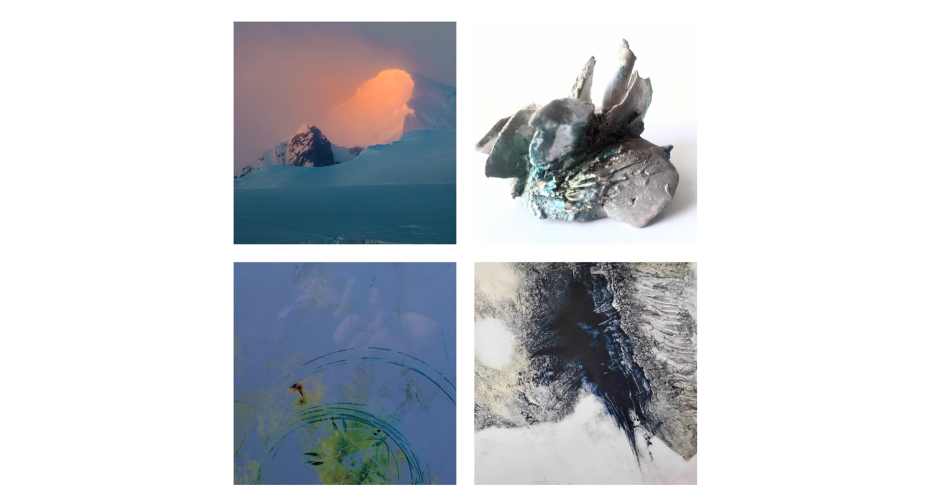
Rare Earth is an exhibition which intertwines scientific and visual research in a multi layered collection of micrographs, photographs, paintings, sculptures and sound recordings.
It was created in collaboration between a team of ESI-based scientists, James Scourse and Alejandro Roman Gonzalez and Cornish artists Bridget Roseberry and Katrina Slack, who investigated and responded to climate and environmental change in the Antarctic.
The Rare Earth team will host an opening on Tuesday 31st May 4.30pm – 6.30pm. The exhibition continues from the 1st - 24th June. Open weekdays 9-5pm, except bank holidays.
Our Disappearing Darkness
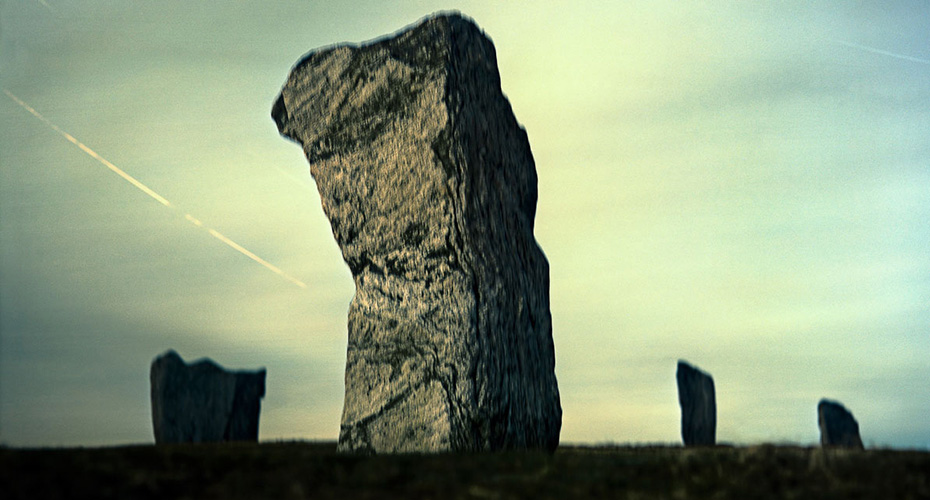
Ninety-nine percent of the population of the United States and Europe experience light-polluted skies to the point that well over half of them can no longer see the Milky Way. Artist and educator MJ Sharp, who has been making large-format, long-exposure photographs for over a decade, is collaborating with Professor Kevin Gaston to explore this ‘disappearing darkness’ as part of a 2021/2022 Fulbright award.
Origins of Silver

Lustrous, reflective, ductile, malleable, conductive, light sensitive…the unique properties of silver are used in a huge range of applications, from batteries to solar panels. Origins of Silver is a research project that aims to unearth some of the complex histories and entangled networks of this precious metal, with a specific focus on its use in analogue photography. This collaboration between artist & lecturer Oliver Raymond Barker, Professor Karen Hudson-Edwards and Professor Nicola Whyte will build a platform for future research and pose questions around this most fascinating of elements. Five independent artists will also be contributing research ideas to the project – William Arnold, Edd Carr, Alice Cazenave, Melanie King & Guy Martin.
Researching Resistance
.jpg)
The Researching Resistance exhibition developed from a collaboration between investigative artist Simon Ryder and the University of Exeter’s AMR network, and has been curated by Dr Kelly Thornber. Featuring portraits of members of the Network, Ryder’s artistic response illustrates that antimicrobial resistance (AMR) is an issue that goes beyond disciplinary, societal and national boundaries.
Fifteen members of the AMR Network, spanning the breadth of subjects and career stages, were invited to feature in a series of photographic works. Originally exhibited at the Forum, Streatham Campus, Researching Resistance will be on display in the ESI Creative Exchange, Penryn Campus from 14 January – April 2022.
Image: Dr Liliane Mukaremera © Simon Ryder
Catalyst
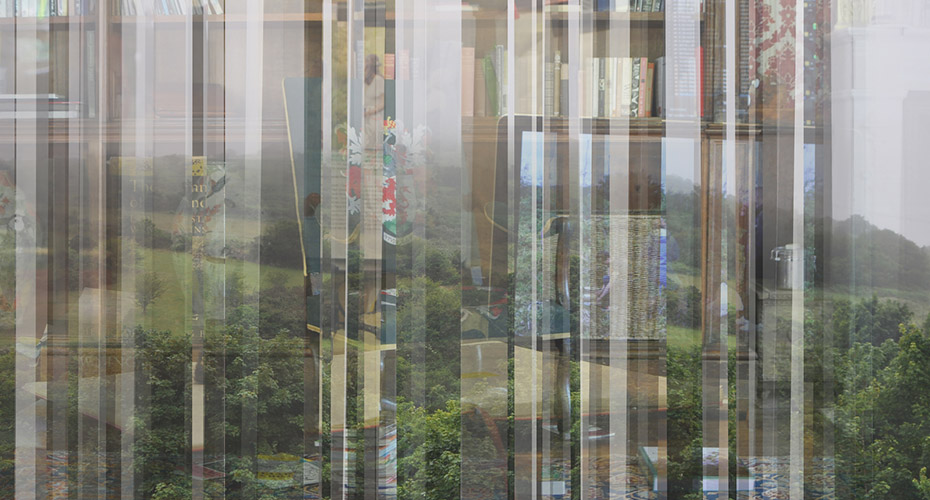
2021 marks almost a decade of the ESI Creative Exchange, to celebrate this fascinating programme of creative collaborations, we’re delighted to be working with Exeter Arts and Culture on a stunning new online exhibition called Catalyst.
We have developed a virtual gallery where you’ll be able to navigate through a series of spaces to view photography, creative writing, visual art and film all exploring issues of climate, environment and sustainability. Launching on Earth Day (Thursday 22nd April), the exhibition will feature artworks of twelve previous Creative Exchange participants, which have been developed since their original collaboration.
Image: Towards Field Station Catalyst Remix © Bram Thomas Arnold 2021
Painting a Parish Future

Painting a Parish Future is a collaborative project by ecological artist Peter Ward and Senior Lecturer in Politics Dr Joanie Willett. The project explores the importance of ecological engagement to political process through interdisciplinary workshops and research. Workshops involve group sharing, walking and participation in a communal painting using locally gathered earth pigment paints in response to specific local ecologies. Events were held in Pendeen and Gorran Parishes in Cornwall with the support of the Economic and Social Research Council and as part of the Creative Exchange Programme at the Environmental Sustainability Institute, Exeter University.
Rare Earth
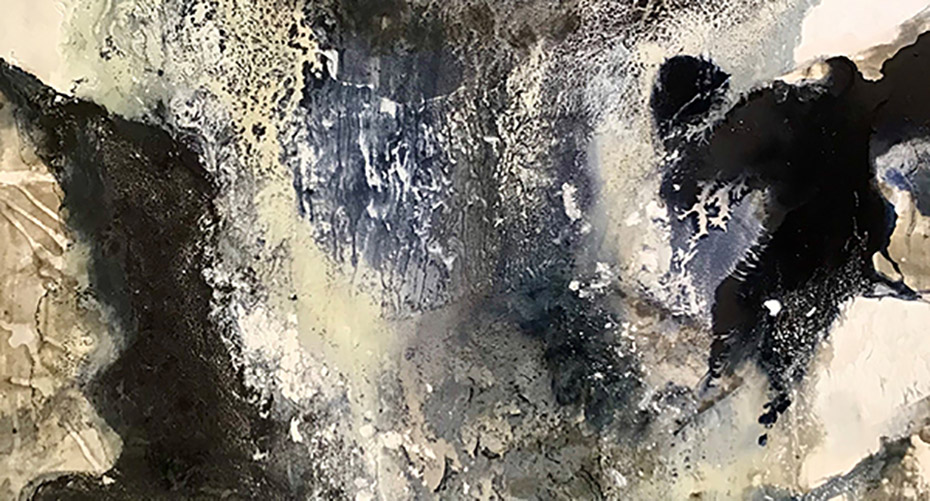
In 2020 painter Bridget Roseberry and painter and sculptor Katrina Slack collaborated with Professor James Scourse and researcher Alejandro Roman-Gonzalez from the University of Exeter on 'Rare Earth', an immersive online exhibition inspired by an Antarctic research expedition taken by the academics in 2019. The work produced by Roseberry and Slack explored microscopic worlds in the ocean and on the ice whilst simulataneously drawing attention to the effects of climate change on the Antarctic environment.
Should I Stay or Should I Go?
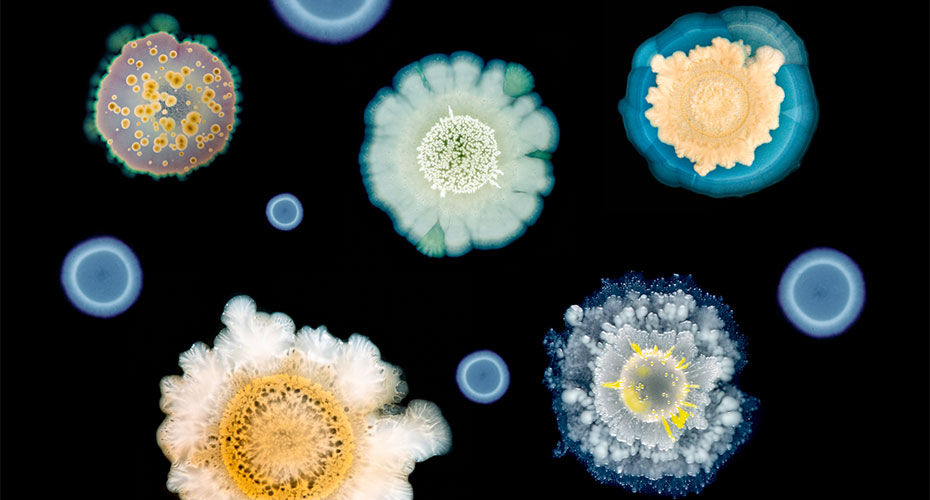
This exhibition ran from 28 February - 3 April 2020 as part of our Underworlds series. Dr Tim Cockerill and Dr Elze Hesse worked together to produce of a series of large-scale macro photographic images visualising the effects of social and environmental cues on swarming behaviour in a model bacterium.
Underworlds
From January-June 2020 the ESI Creative Exchange hosted an extended programme of art-science collaborations on the topic of UNDERWORLDS. In a series of four projects, artists and researchers are exploring themes of the underground, the undersea, the hidden and the microscopic.
Hidden in Plain Sight

This exhibition ran from 17 January - 21 February 2020 as part of our Underworlds series. Hidden in Plain Sight was a photographic journey into the subsurface of Cornwall’s mining heritage. Photographer, caver and mine explorer Hugo Glasier collaborated with Laura Newsome (an ESI-based geomicrobiology lecturer), Tomasa Sbaffi (a PhD student studying the microbial communities living in Cornish mine waste), and Carmen Falagan Rodriguez (a researcher in the ESI geomicrobiology laboratory).
UNDERWORLDS
Hidden in Plain Sight was part of an extended programme of art-science collaborations on the topic of Underworlds, hosted by the ESI Creative Exchange from January-June 2020. In a series of four projects, artists and researchers are exploring themes of the underground, the undersea, the hidden and the microscopic. Collaborators used scientific techniques and creative practices to better understand the habitats and behaviour of subterranean and submarine lifeforms, and worked with earth pigments and ocean sediments to produce visual representations of invisible or inaccessible worlds. Several of the projects engaged with the specificity of the Cornish landscape, and its legacy of mining and mineral extraction.
The Creative Exchange was co-funded by the Environment and Sustainability Institute (ESI) and the University of Exeter's Arts and Culture programme.
A Stitched Survey of the Dyer's Garden
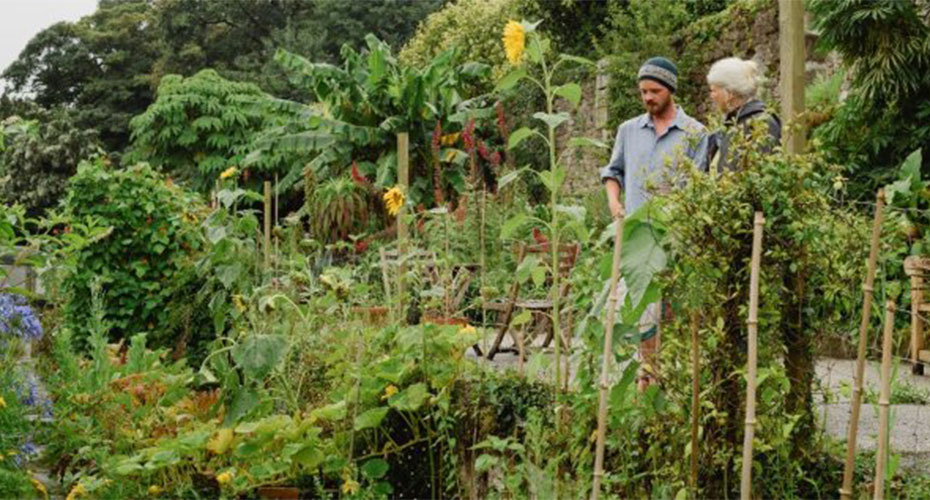
Christiane Berghoff worked on an area of the walled garden on the Penryn Campus, planting and nurturing a variety of plants selected for the purpose of botanically dying textiles and for their value to insect pollinators. She worked in collaboration with PhD student Will Hawkes, an environmental biologist at the University of Exeter whose research is concerned with recording the migratory behaviour of insect life.
Food for Change exhibition
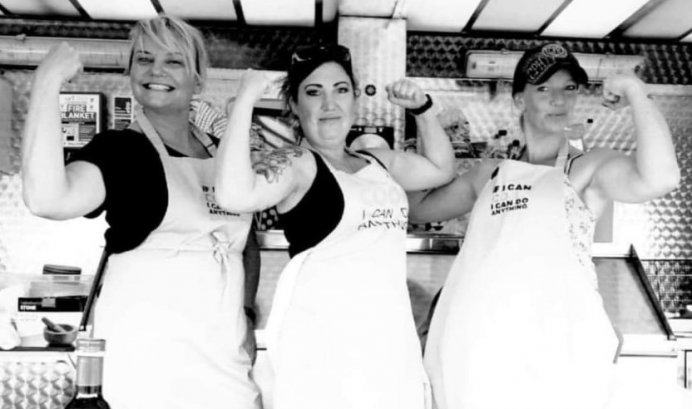
The Food for Change programme used food to inspire individuals to learn new skills and to progress into work or education. Participants in the programme used photography to document their experience of gaining new food skills through workshops with community chefs and growers in Cornwall.
Pretty Useful Solar Panel Artwork
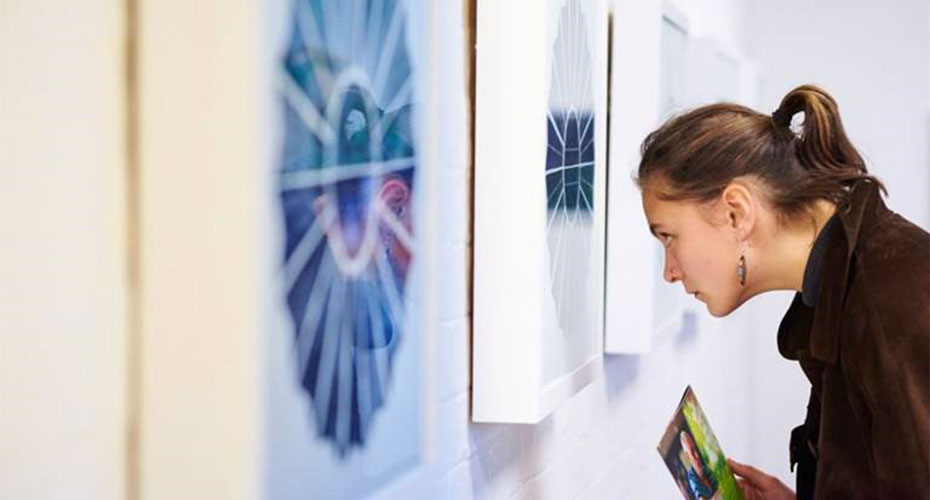
Art and Energy artists Chloe Uden and Naomi Wright collaborated with post-doc researcher Katie Shanks to challenge the aesthetics of silicon solar PV in order to re-imagine solar panels as places for artworks of the future.
A Transect for Trelowarren
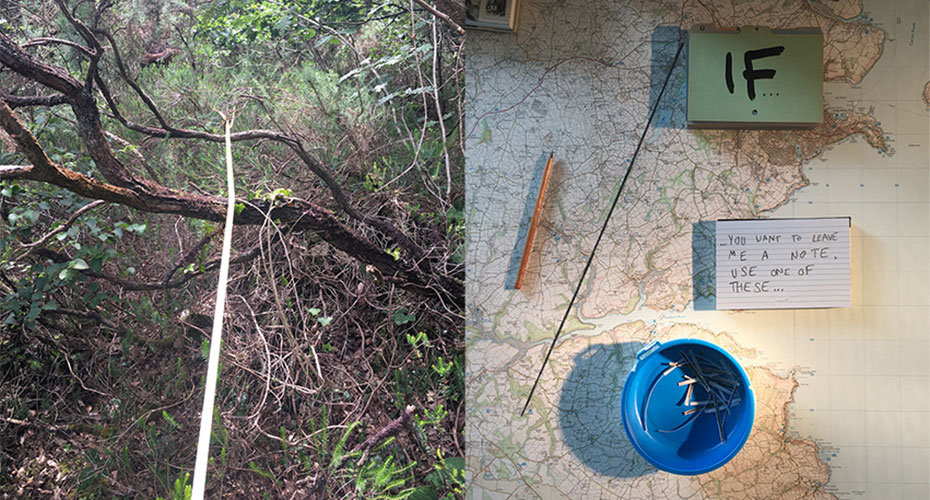
Bram Thomas Arnold is an artist who started with walking and kept going, into performance, installation, drawing, academia, broadcasting and writing. Walking has become the foundation of his transdisciplinary practice, a practice that does not restrict itself to traditional notions, boundaries, mediums or modes of practice: it is an ecological form of practice that is simultaneously Conceptual in its methods and Romantic in its outcomes.
Deep Materialism and Caretaking
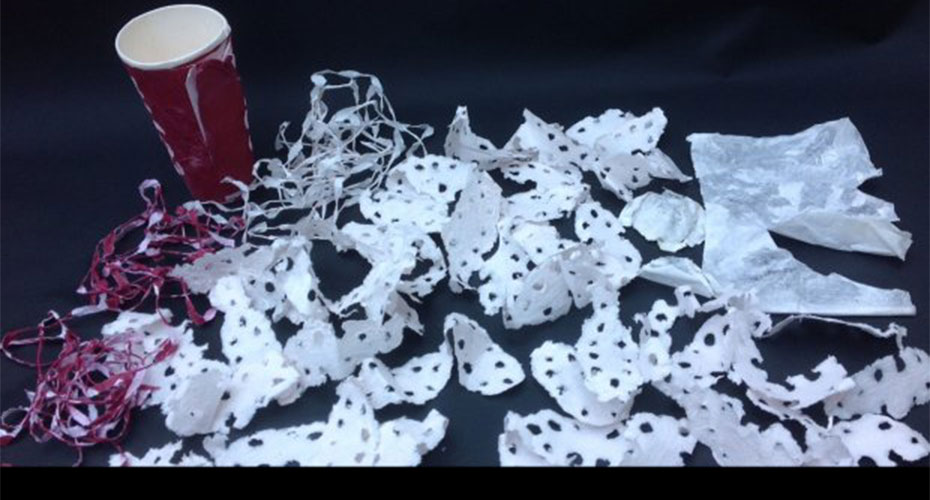
Dr Alison Harper (environmental textile artist) and Dr Sarah Chave (honorary researcher in the University of Exeter Graduate School of Education) collaborated to explore the human use and abuse of the material world.
The Wave Energy Harvesting
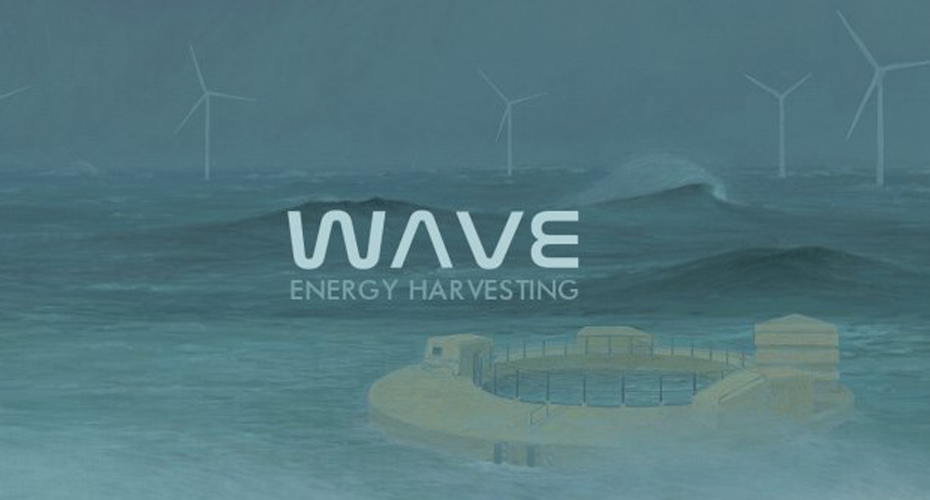
This collaboration artistically presented mathematical and engineering research outcomes related to ocean wave and wind energy extraction through the use of wave and wind energy converters. The exhibition featured a new series of seascape paintings by artist Yulia Dotsenko (Christie’s Education alumna, ESI affiliate) inspired by Dr Hamid Alemi Ardakani’s (Lecturer in Mathematics, University of Exeter) wave energy research and devoted to the theme of wave/wind energy harvesting. The purpose of this art-science exhibition was to present current world-leading research on wave/wind energy extraction through the medium of artworks, rather than sophisticated mathematical analysis. Website: https://www.hamidalemiardakani.com/exhibition
See Shells and Climate Change
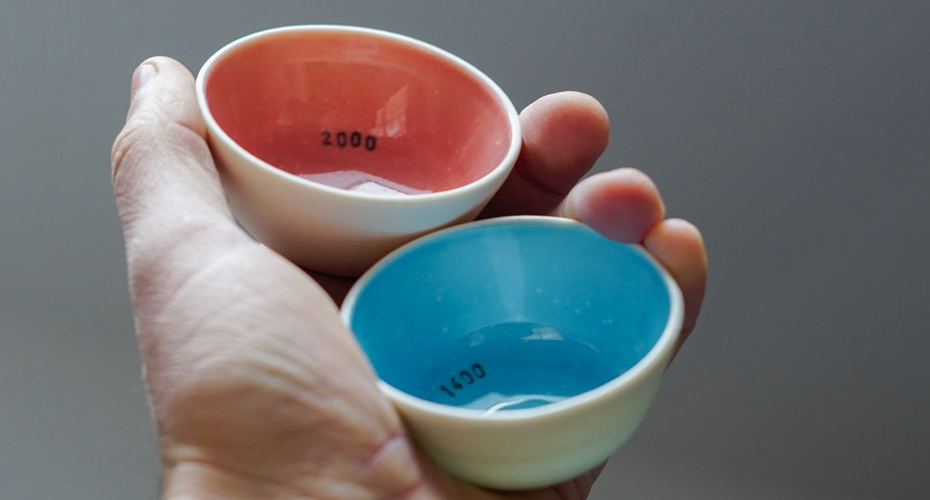
A collaborative project by ceramic artist Jake Boex, climate scientist Professor James Scourse and Phil Dyke (National Trust Coast and Marine Advisor), this exhibition explored our emotional reaction to climate change.
Boatbarrow

In July 2018 seven families took part in ‘Retreat’, a creative residency to imagine and design how to live when lives are radically affected by climate change. They came together as climate refugees fleeing their flooded homes to gather in a holding camp, where they had to reinvent ways to meet their basic needs and figure out how provide things they had taken for granted.
Sail Against Plastic
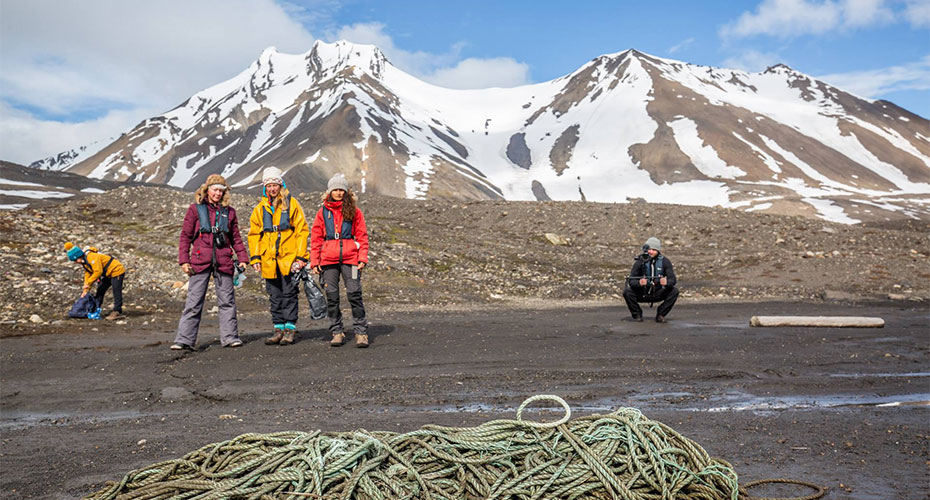
Sail Against Plastic, a pioneering team of scientists, filmmakers, photographers and artists, made an expedition to the Arctic to determine the levels of plastic pollution making its way there on ocean currents.
Visible Mending
On the 19th October the ESI hosted an event which looked at the importance of repair in the circular economy and the fantastic work that is happening around Cornwall to repair our much-loved items. The evening included talks from Stefano Pascucci, ESI Professor in Sustainability and Circular Economy, on ‘Community, Circularity and Innovative Practice’, and Pete Halswell, Falmouth & Penryn Repair Café Chair, on ‘The First Cornish Repair Café: Origins and Outlooks’.
Kurt Jackson at the ESI
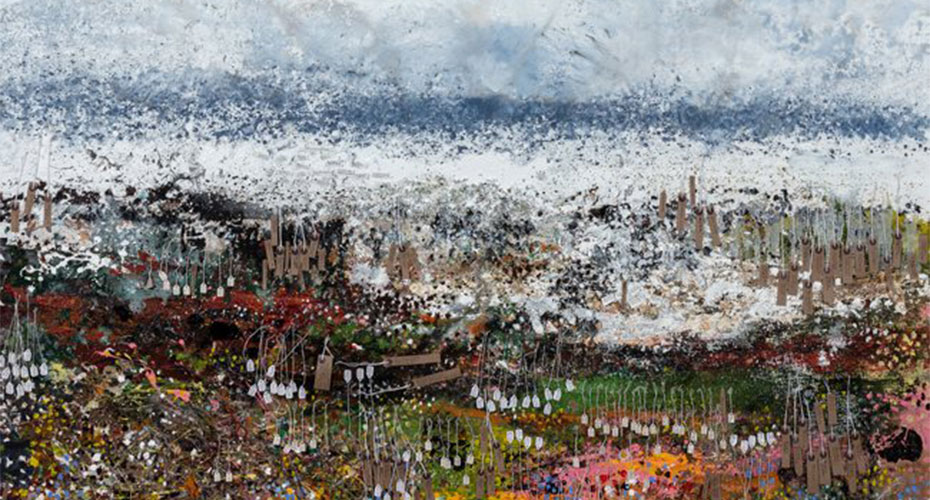
Kurt Jackson at the ESI was an exhibition to celebrate Kurt's new painting Taxonomy and Biodiversity and the reinstallation of his water sculpture Cornish Trembling Sea Mat. An exhibition of Kurt's work, including photography and preliminary paintings, ran in the Creative Studio as part of the Creative Exchange Programme. Kurt Jackson attended and read a poem that he wrote to accompany the new painting.
As one of our most celebrated landscape painters, Jackson has been very generous in sharing his work with the University of Exeter and in particular the ESI.
Some years ago Jackson donated Cornish Trembling Sea Mat a granite sculpture with a sculptural bronze bowl, flowing with water. The sculpture has been reinstalled between the ESI and Camborne School of Mines for staff and students to enjoy whilst crossing the courtyard or sitting outside. In addition to this, Jackson has created a new 3 metre by 2 metre seascape painting Taxonomy and Biodiversity especially for the ESI’s atrium space.
Curated by Claire English for The Creative Exchange Programme, which aims to facilitate collaboration between creative practitioners, the ESI and researchers on our Cornwall Campuses who share an interest in issues of environment and sustainability.
Melting Pot
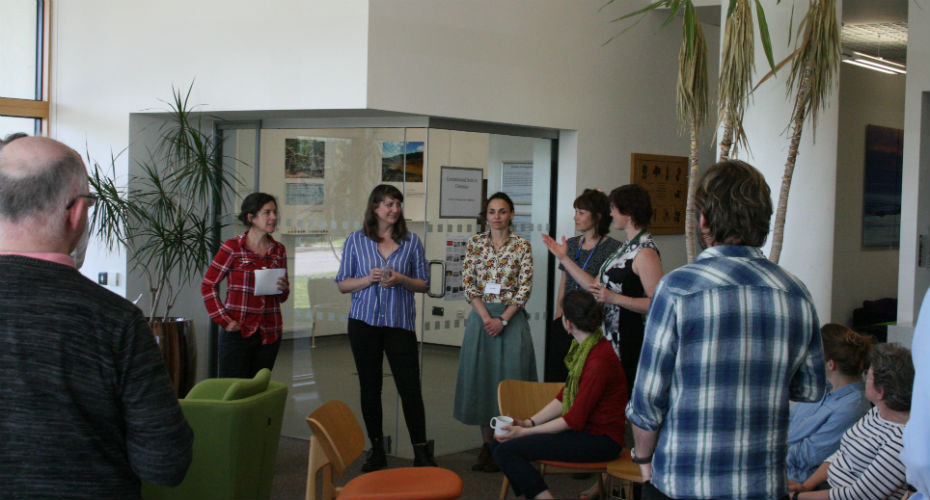
The University of Exeter’s Environment and Sustainability Institute (ESI) hosted the Creative Exchange Programme’s ‘Melting Pot’ on 19 April 2018. The event brought together local creative practitioners to discuss and develop new collaborations with University of Exeter research staff. Details of future Melting Pot events will be posted here. Read more.
Rock Paper Scissors - When Microbes Play Games
Rock, Paper, Scissors – When microbes play games was a graphic novel telling the toils and hardships of a cunning little virus triumphing over its enemies with the help of a valiant knight. It illustrated the intense struggles between viruses of bacteria and their bacterial hosts. The graphic novel was developed under an intense collaboration between Orlando Serpe (3rd year Fine Art BA, Falmouth University) and Mariann Landsberger (postdoctoral researcher, University of Exeter).
The development of this book was funded and supported by the European Society for Evolutionary Biology, as well as the Genetics Society and the Environment and Sustainability Institute Creative Exchange Programme.
The Creative Practitioner
Orlando's practice focuses around narratives/story telling through visual language, making the story easy to read without words, whilst at the same time including a variety of different mediums, from digital art to printmaking and sculpture. Orlando is interested in the different view points of a subject in the same piece, as if a camera is walking around the subject and taking pictures. You can find more on Orlando's Instragram: andreio_as-art
The Researcher
Mariann is a postdoctoral researcher for the University of Exeter based in the ESI. She is an immunologist with a keen interest in virus-host interactions. Currently, Mariann is focused on different aspects of bacteriophages carrying anti-CRISPR genes, which facilitate the infection of bacteria using the CRISPR-Cas system to defend against phages.
Contaminated Soils in Ceramics
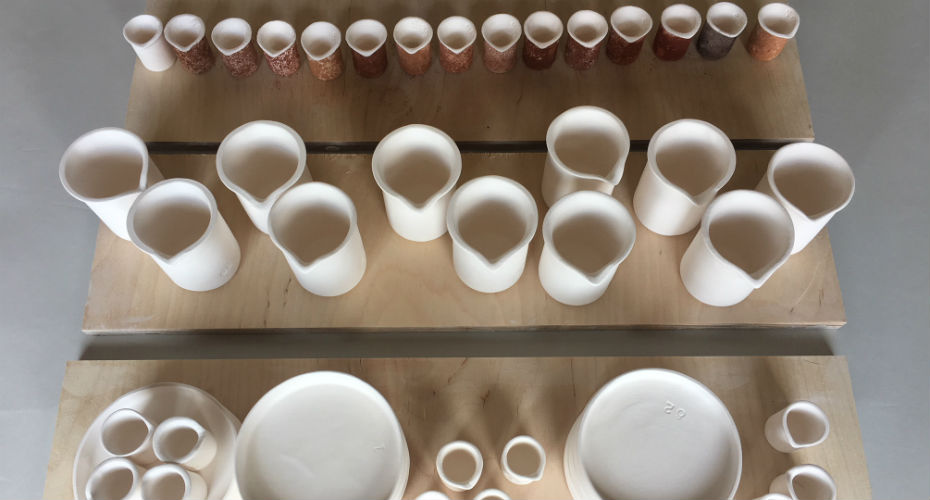
This Creative Exchange project forged links between scientist Dr Elze Hesse and ceramic artist Fleur Winter with the aim to bridge their fields through the use of research material and fired ceramics. Hesse is an evolutionary ecologist working on the use of bacteria in the remediation of metalcontaminated soils. Winter is a ceramic artist and teacher, working at the Leach Pottery in St. Ives. Cornwall has a rich mining heritage as apparent from the significant production of tin, copper, arsenic, lead, zinc and silver during the eighteenth and nineteenth centuries, which fuelled the industrial revolution. Many mines are no longer working, leaving a legacy of untreated mining waste.
The aim of the project was to explore how such metal-contaminated soils affect the quality of ceramics. Ceramic artists commonly explore a wide variety of raw materials to achieve different textures and colours. Some of these qualities are highly dependent on metal content.
As part of her research, Hesse extensively sampled and characterized soils in local postindustrial mining areas. As part of the collaboration a subset of these soils were selected, based on their metal composition and used to explore how variation in metal content affects ceramics. As a first step in this process, Winter produced a series of slip cast porcelain and pressed forms using plaster moulds, taken directly from the lab-ware used in Hesse’s work, ‘the unsung heroes of decades of research’. These lab-based ceramics were then used to create a collection of informative
‘glaze tests’.
Engaging scientists, artists and the public from ESI, Camborne School of Mines and the Leach Pottery, the use of polluted soils as glaze components in this project highlights the impact mining has had on the Cornish landscape. Subtle differences in the clay glazes showed the meticulously collected research materials affecting the surface, structure and colour of the ceramics created. The use of lab-ware further links to the use of vessels in clay, drew parallels between science and art and addede to an increased understanding of the world, leaving a legacy of creative and reflective
experimentation.
The first test used pre-burnt contaminated soils in varying amounts (2% and 4%) in Leach Pottery’s Ying Ching glaze and then were treated to two different firings; a reduced atmosphere firing, where the kilns atmosphere is starved of oxygen during the process, and brings out the colours of the oxides within the glaze more vividly, and a simple oxidation firing.
The second test used soil samples pressed directly onto the clay surface and formed using the mould. These pieces were glazed using the base Ying Ching glaze recipe and put through a reduction firing.
The third test used mine tailings from Wheal Maid (kindly donated by Dr. Chris Bryan), where 100% of the soil is used as the clay body and then proportionally mixed with the simple white clay body porcelain in 25% increments (75%, 50%, 25%, 0%). These were left unglazed and fired in an
oxidation firing.
With special thanks to: Pawel Sierocinski, microbiologist, who initiated the collaboration.
More than Food
More than food was a striking selection of photographs, designed to raise awareness and create debate around foodbank use, funded by the Creative Exchange.
The exhibition was a collaboration between the University’s Social Innovation Group, distinguished photojournalist Paddy Dowling, and local foodbanks. Reflecting on lived experiences of foodbank use, the images and stories illustrated the complex circumstances at play and the power of localised forms of care.
The exhibition was a creative exploration of the central organising concept of the Social Innovation Group’s existing EU funded projects: place based and person centred care.
The exhibition was on display in the ESI Creative Space from the 6th February to 16th March 2018.
For more information about the exhibition, please contact l.colebrooke@exeter.ac.uk
The workshop:
What next for welfare and support in Cornwall? Sharing learning and building responses to welfare change.
The Creative Exchange has enabled members of the University of Exeter’s Social Innovation Group to facilitate a workshop focussed on the delivery of care within a context of profound change to the welfare system. Using photographs and narratives from the ‘More than Food’ exhibition, which reflects on issues around food bank use in Cornwall, this workshop built on existing partnership work through the ESF funded project Smart Tenant, bringing together partners from the charitable and voluntary sector, food banks, housing associations and academics to share learning. The aim of the workshop was to provoke reflections and discussions on the issues raised by this work in order to produce guidance and recommendations for enabling local organisations to adapt to these changes in the Cornish context.
Stuart Townley - The Mathematician and the Artist
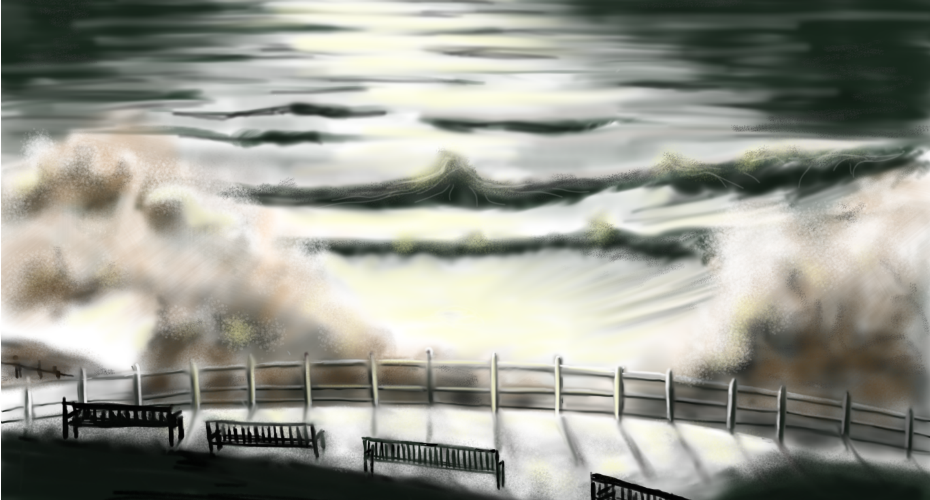
I am a mathematician and use continuum models – differential equations -- to analyse various aspects of environment and sustainability. Inevitably, these models are digitized on the computer to produce simulations, which in turn help me to understand and predict various scenarios. In some sense, this exhibition is a metaphor for my research. Paintings are models we can use to represent and interpret reality; landscape paintings create a simulation of environmental surroundings under certain conditions. Reconstructing and reinterpreting these paintings digitally can, in turn, be likened to computer-based modelling.
In my research I am highly collaborative and work not only with other mathematicians, but also a variety of life scientists and engineers. By working with others, one can develop a better understanding of issues and processes. In contrast, here I am collaborating with myself, reworking, challenging and reinterpreting my previous work. In this collaboration, I used the Art Studio®app on an ipad pro® 10.5 with Apple Pencil® to recreate: Blue Sky and Clouds over Exeter (No. 4); Sidmouth Storms (No. 9); Sunset at Lands’ End (No. 11); and Seven-Swans-a-Swimming at The Prince of Wales Pier (No. 12).
Finally. A traditional painting is never quite finished and modifications and embellishments are always possible. But digital art is live and interactive.
Resilient local food systems in the Tamar Valley

Local food systems play a key role in the creation of livelihood strategies throughout the Tamar Valley. This project seeked to disseminate knowledge of how local food systems function. In particular, we seeked to raise awareness of relevant linkages between soil health, water and food production. The project presented, in an innovative way, the role that sustainable local food systems play in the creation of resilient livelihoods and communities. Rosie Fierek’s artwork is inspired by the work that Tamar Grow Local undertakes in the area - stimulating and incentivising local food production and consumption - and research by ESI researchers Gloria Salmoral and Xiaoyu Yan on water-energy-food nexus in the EPSRC funded WEFWEBs project.
Rosie Fierek says, "The whole artwork has been designed to be seen in the round, is built of ceramics and wood, and contains figurative, abstract and surreal elements. It serves as a visual metaphor for how Tamar Grow Local supports the growth and consumption of local food, and hence healthy and sustainable links with the natural environment. There is a kind of cycle represented by a ‘giant pea pod and stem’ which, tapping into water, grows over a large piece of wood (actually dredged from the Tamar). The 'pea' symbol, of course, implies that these seeds can be re-sown to propagate further activity and perpetuate the cycle. Illustrations in the ceramic pea structure show many aspects of local growing culture".
Dr. Gloria Salmoral who commissioned the project on behalf of the ESI said: “We would like to show with this project the inextricably links that exist on water, soil and land systems and how they depend on each other, something that we are already researching in the EPSRC WEFWEBs project. We hope to visualize, in an attractive and abstract way, linkages between those systems and their relevance for resilient local food systems”.
Rachael Forster from Tamar Grow Local said: ‘It’s a real privilege to have the opportunity to work with Rosie and the University of Exeter to present our work in an innovative and creative way. We can’t wait to see the result and hope it will be an inspiration for other communities.’
The final artwork was on display in the ESI Creative Space in the University of Exeter’s Penryn campus between 25th September and 26th October.
Bee Health: Audio Immersion
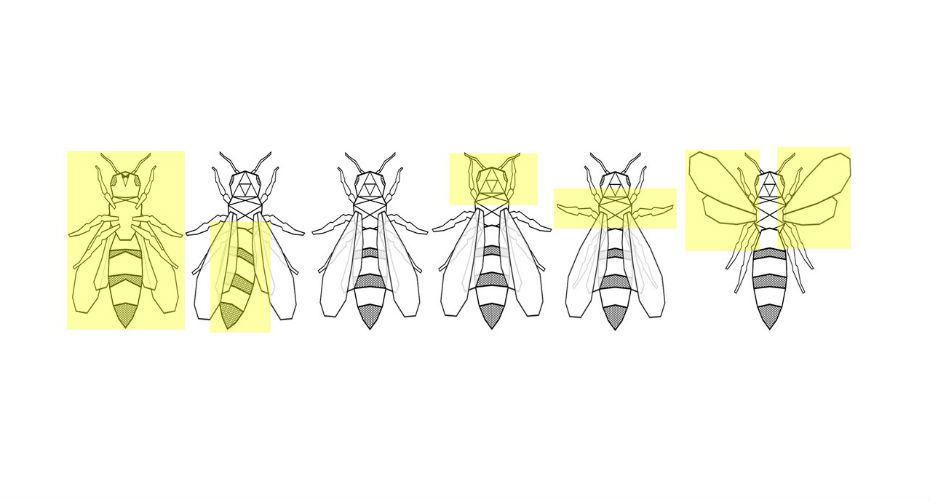
Pollinators, including honey bees, face unprecedented pressures through accumulated stress in response to disease, combined with exposure to environmental toxins. It is these multi-factoral stresses that have contributed to the current high rates of colony mortality.
In this Creative Exchange, academics from the University of Exeter facilitated a representation of honey bee data into a contemporary cello piece with an interpretive piece of music for both healthy hives, and those affected by pesticides and disease. The music is presented with a visual representation of the data, in the form of an animation.
By representing the data from bee hives in a novel way and going beyond language, the team hoped to tap into a fundamental way of experiencing a phenomenon to convey differences between healthy honey bees and those experiencing a number of stressors. The two tracks were created using two data sources each: the first from a study of honey bee behaviour when exposed to acetylcholinesterase inhibitors, commonly used as pesticides, with a control, and the second from acoustic recordings from within healthy hives and those infected with Nosema. Oak Matthias, a classical cellist and Falmouth University Fine Art student, produced a melodic line by improvising from music produced by converting the behavioural data into corresponding cello sounds.
To further explore the way honey bees and humans influence each other, this creative exchange also featured pieces from the artist Kurt Jackson, and his exhibition "Bees (and the odd wasp) in my bonnet".
Arvor
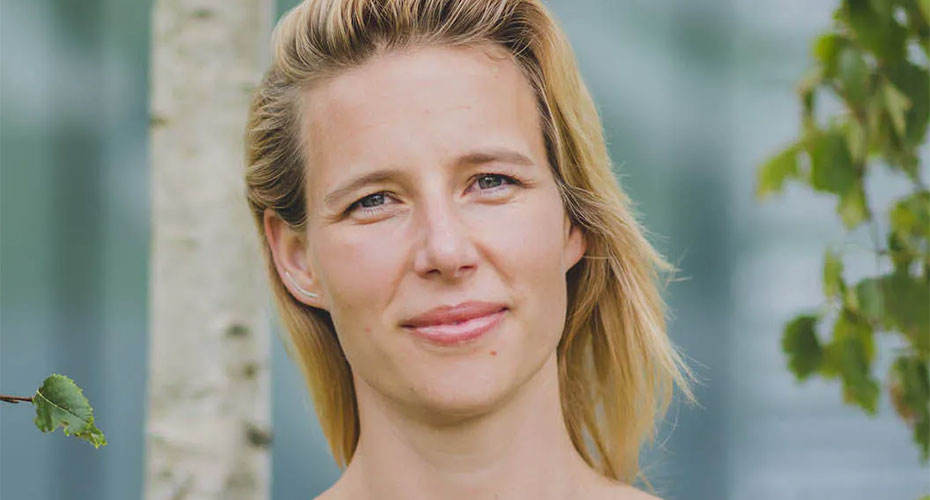
Natalia Eernstman, artist, researcher and project manager for Golden Tree, collaborated with the ESI on various projects concerning coastal change, extreme weather and community resilience.
Arvor is a long-term strand of creative work around the influence of the sea on the Cornish coast, its communities and culture. As part of the AXA Outlook project You, Me and Our Resilience (with Professor Katrina Brown) we completed Weather the Storm, an outdoor, interactive performance in Porthleven.
We are now working on Miss You Already, in which five artists will create work on three erosion-prone coastal locations, gathering people’s memories and stories of these places and exploring what it feels like to lose parts of the coast to the sea.
Dr Grace Twiston-Davies, the ESI Research Associate on the project said, “I am fascinated by Josie’s environmentally friendly techniques, powered by plants and combining traditional methods with modern technology, the perfect interpretation of our Farms for AONBees project”.
6000 Flowers

6000 Flowers was artist Josie Purcell's response to the Farms for AONBees' pollinators’ project that was in progress between Cornwall Area of Outstanding Natural Beauty (CAONB) and The Environment and Sustainability Institute (ESI), University of Exeter.
Spring sees bumblebee queens visiting up to 6000 Flowers per day to collect enough nectar and pollen to establish her colony. However at this time of year there can be a shortfall in the availability of high quality flowers across agricultural landscapes.
Josie is a photographer with a passion for alternative and historic photographic processes that have as little impact on the environment as possible. The image making technique she implemented for this exhibition were the anthotype. This makes the most of nature's bounty through the use of a photosensitive emulsion made from the juice/pulp of plants, flowers and berries. The resulting delicate monochromatic images were produced within several hours or weeks depending on the solution used and the duration/strength of sunlight.
The ‘Farms for AONBees' project seeked to make a significant difference to the quality of our landscapes for conservation and food production. At the core of this project was a computer programme developed in Prof. Juliet Osbornes’ pollinators research group at the ESI that replicates the foraging and colony survival of bees in realistic landscapes. The ESI and the CAONB performed real time testing of the computer programme on agricultural holdings by working with 5 farms across the Area of Outstanding Natural Beauty.
Josie's exhibition drew on the science behind this project and its importance in helping us understand more about bees’ health, survival and the pollination they provide.
Colette Beckham, CAONB Partnership Manager said, “It’s great to see how science and the arts can come together through a project like Josie’s, to illustrate just how important it is to find solutions to the shortages of forage that can affect Cornish bumblebees whilst they’re on the wing right now”.
Dr Grace Twiston-Davies, the ESI Research Associate on the project said, “I am fascinated by Josie’s environmentally friendly techniques, powered by plants and combining traditional methods with modern technology, the perfect interpretation of our Farms for AONBees project”.
Goonhilly Village Green
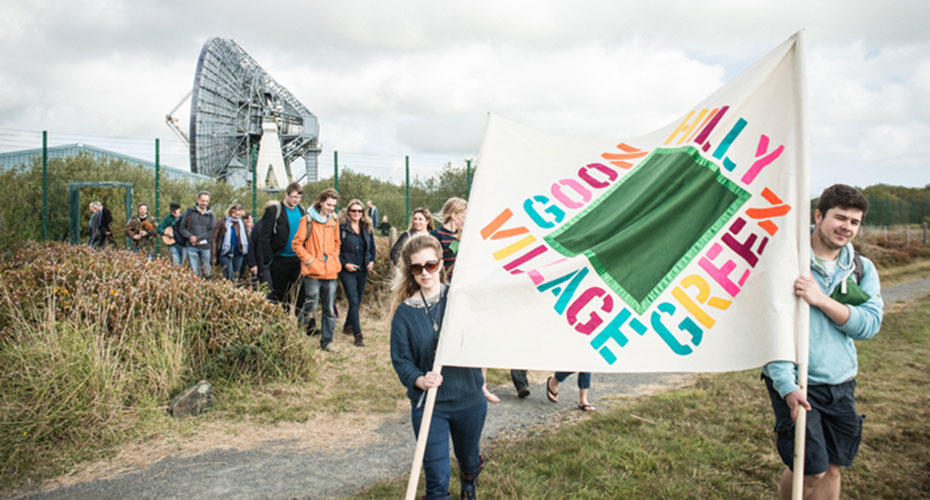
Through the Goonhilly Village Green (GVG) project, artists Sara Bowler and Elizabeth Masterton worked with academics and students at the ESI who were conducting research on the Lizard Peninsula's Goonhilly Downs.
Protected by its SSSI status and environmental heritage scheduling, the Downs form a unique landscape, underwritten by a distinctive serpentine geology. The project provided an opportunity for academics and other specialists to engage with amateur and lay people interested in sharing and exploring diverse bodies of knowledge associated with the Downs, and served as a temporary centre of cultural activity designed to generate a lasting legacy. A GVG event in 2016 included formal presentations, public lectures, workshops, guided tours and social activities intended to celebrate this special place.
In June 2015, Arts Council England made an award of £15,000 towards the project's further research and development. The award, made through public funding from the National Lottery, enabled the artists to consolidate their research to date and prepare for a pilot public event in September 2015, which included an artist’s commission, thematic workshops, walks, talks and social gatherings.
As artists, Bowler and Masterton make opportunities for new and innovative ways of disseminating research findings and debates, encouraging wider experiential understanding of complex issues. They actively looked to foster discussion between amateur and professional groups, with a view to understanding how Goonhilly Downs and similar sites could be supported and managed in the future. Through a process-based methodology, the aim of the project was to create a rich matrix of inputs for GVG with a view to fostering new and innovative outputs in the future.
The artists’ earlier project, Happidrome, presented the work of over 20 artists at the site from 2007-2011; Sara Bowler's website also has further details of her work.
In July and August 2015, a summer show in the ESI's Creative Studio featured work-in-progress from three current collaborations between ESI researchers and creative practitioners, including the GVG project.
The pilot project's culmination was a full day of events on September 26. This unique collaboration between local artists, organisations and businesses drew a wide range of visitors to explore the astounding natural environment, Earth Station structures, WW2 ruins and ancient archaeology. The project's aim was to be a place of assembly for locals and visitors alike: a common ground on which people could gather to meet, talk, learn and play. ESI researchers Dr Jonathan Bennieand Dr Caitlin DeSilvey were directly involved, sharing their understanding, knowledge and research questions with members of the audience.
Subsequently, the successful delivery of this Pilot project enabled the GVG team to secure funding from Arts Council England, Heritage Fund, FEAST, the Ernest Cook Trust and Elmgrant Trust for a programme of local events from February-April 2019, culminating in the main public event, The Gathering, in May 2019. The eclectic programme included: 6 new artists commissions; a Community Heritage Programme of workshops and talks; Goonhilly School, a day of outdoor learning on site for local children; the Village Green Society Lectures and Film Club; performances, themed activities and a “parish newspaper”, The Goonhilly Chronicle.
Work commissioned by Goonhilly Village Green from artists Phyllida Bluemel, Rosanna Martin, Elizabeth Masterton and Beth Emily Richards will be exhibited at the Eden Project’s Core Gallery from 2 November 2019-27 January 2019, as part of Unbounded: Contemporary Art Practices in Cornwall; a exhibition curated by the Eden Project and Field Notes showcasing artists working in or connected to Cornwall.
Soil Culture
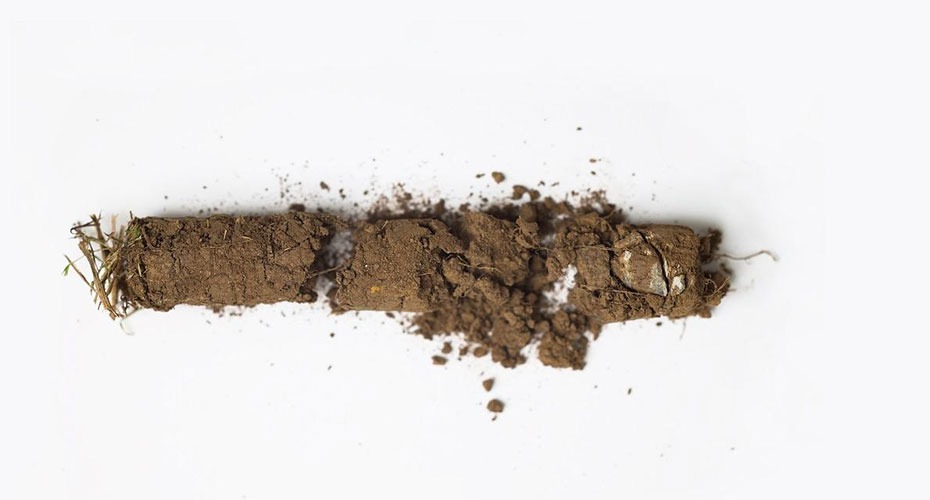
Artist Marissa Lee Benedict was awarded a Soil Culture residency to work with researchers in the ESI in August 2014. The residency was delivered by the ESI in partnership with the Centre for Contemporary Art and the Natural World (CCANW).
Marissa is a Chicago-based sculptor, researcher, writer, explorer, teacher and avid amateur of many fields and disciplines. Motivated by a sense of critical wonder, Benedict’s artistic practice is rooted in research and experimentation: she is drawn to systems that allow equal space for planned action and uncontrollable reaction. Working with biological, chemical and physical processes, her projects range from growing algae under fluorescent lights to digging up mud samples and assembling large-scale microbial fuel cells.
During her residency, Marissa worked alongside Dr Gabriel Yvon-Durocher, whose research interests focus on the response of soil carbon sequestration to climate change and land use management. He was, at that time, developing a research project at Lynher Dairies, a 250-acre organic dairy farm, to investigate how agricultural practices can promote carbon sequestration, improve soil carbon storage and maintain viable yields.
Marissa used video and photo to document the research and place a lens on the critical role carbon plays in our atmosphere, our soil and our future climate.
The Centre for Contemporary Art and the Natural World, based at the University of Exeter, explores new understandings of our place within nature through the arts. Soil Culture, a collaboration with Falmouth University and involving many partnerships across the South West, uses the work of artists to inspire a deeper appreciation of the importance of soil – a resource on which our entire civilisation depends.
A book detailing the overall, three-year work of Soil Culture is available, as is a 30-minute film on the same subject.
Crafting Stability, Tipping Points and Chaos
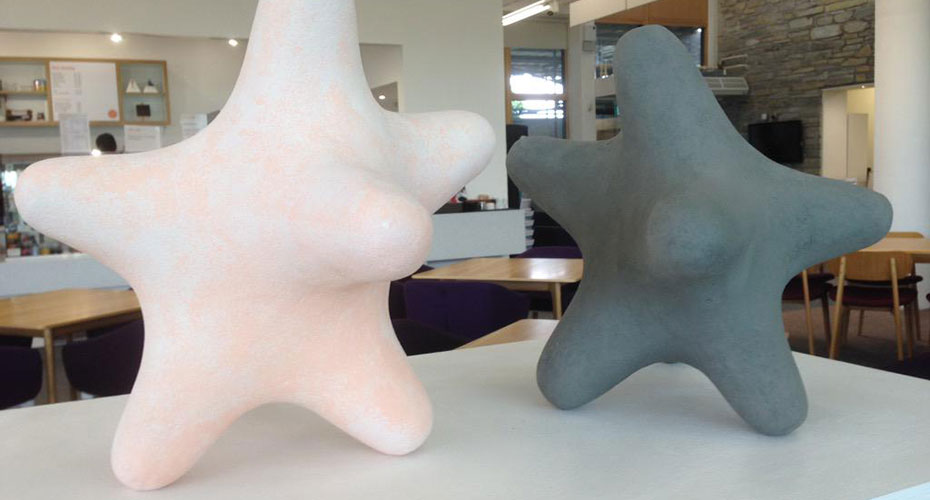
How do you craft objects from the mathematical models that are used to investigate climate and environmental change?
Dr Markus Mueller and Samantha Gerlach’s collaborative project sought to translate those dynamic-behaviour mathematical models into crafted objects; these were creative interpretations of the concepts of stability, tipping points and chaos.
Basic mathematical models describing the Earth's energy balance have been used for over 150 years. For most of this time, it has been understood that the Earth’s atmosphere acts as an insulator that holds solar radiation, and therefore maintains and stabilises global temperature to produce conditions favourable to sustaining life. It is also acknowledged that the concentration of carbon dioxide and other greenhouse gases in the atmosphere might be responsible for an increase or decrease in the Earth's temperature.
From a mathematical viewpoint, temperature simply balances the equation of incoming and outgoing energy from the sun. As we inflict change on systems like the energy balance equation, or many other dynamically changing systems, it is possible that these systems will experience so-called ‘tipping points’. This means that a stable equilibrium state, and thus a balanced temperature, ceases to exist. This would result in a rapid and potentially immense change, e.g., 'Snowball Earth', in response to a changing climate.
Typically, it is not possible simply to reverse this effect because reversing the trigger for change may lead to chaotic and unpredictable behaviour of the system: in other words, global warming is not simply reversible by global cooling.
In July and August 2015, a summer show in the ESI's Creative Studio featured work-in-progress from three collaborations between ESI researchers and creative practitioners, including 'Crafting Stability, Tipping Points and Chaos'.
Foreign Soil
_2012-15.jpg)
Jonathan Bennie, ESI Associate Research Fellow, collaborated with artist and writer Gabrielle Hoad to identify and exploit microclimates where edible dessert bananas might be grown outdoors in the South West. By suggesting the imposition of this tropical alien into the traditional British countryside, the project opened up space for conversations about what it means to eat local food and the future of UK food supplies.
The project ran from January 2014 to January 2015 and culminated in an exhibition in the ESI; it modelled and mapped biologically-relevant microclimates in order to support a more informed investigation of the feasibility of banana cultivation – now or in a future climate scenario.
Jonathan hopes that the project will provide insights that he can incorporate into his mainstream research work, including new ways of understanding, visualising and communicating the complex spatial and temporal patterns of microclimate within landscapes. Gabrielle is interested in how the attempt to grow bananas offers a light-hearted route to engaging with future scenarios - such as ecological disruption and food shortages - and hopes that the collaboration will shift the experiment into the category of the 'possible' and give it more traction with public audiences.
All Washed Up
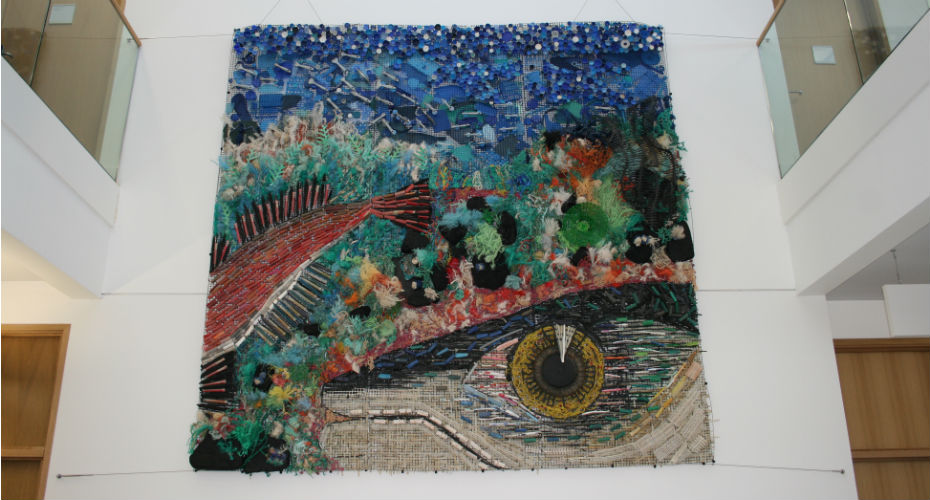
All Washed Up was a collaboration between Dr Matthew Witt, a lecturer in Natural Environment within the ESI, and Rame Peninsula Beach Care (RPBC), a beach cleaning group from South East Cornwall.
Natural Alchemy
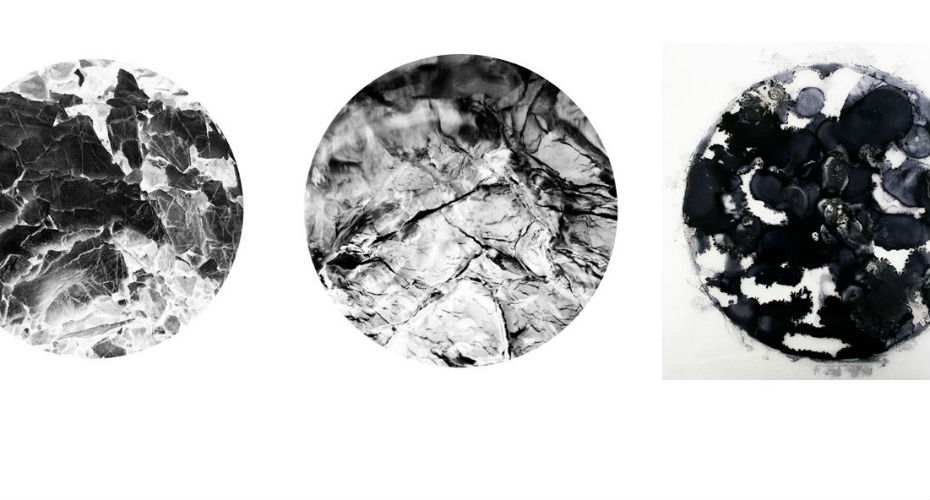
The Natural Alchemy project, a collaboration between Chris Bryan and Oliver Raymond-Barker, is an exploration into process.
The project (May 2013 to June 2014) creates artwork by combining the unique properties of plants, rocks, minerals and metals with the systems and organisms that surround them.
Specific areas of research include the latent potential of natural materials, the innovative use of contaminated waste, the dynamic between autonomous and governed process and the fusion of ancient and modern systems. The work seeks to develop a visual syntax beyond traditional lens- and print-based media, while also drawing on the research and experimentation that has gone before.
The image to the right has been selected for publication in Dark Mountain Volume 5, an anthology of essays, conversations, poetry, fiction and art that challenges the root assumptions of our culture, due for publication in mid-April.
For more details and further striking images, see the project's blog.
Reshaping Fashion Norms
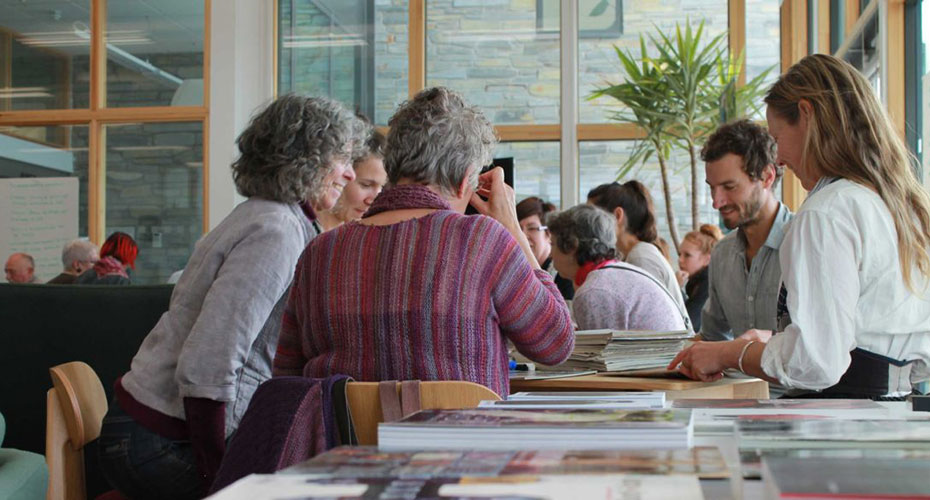
High-street ‘fast fashion’, which promotes fast-moving trends and disposable garments, is known to have serious environmental and social implications. Yet fashion is so highly embedded in matters of self-identity that relatively few consumers see beyond its glamorous side.
This project, a collaboration between Clare Saunders, Sue Bamford and Irene Griffin, looked to ask: how might fashion norms be re-shaped so as to reduce the environmental and social impacts of fashion?
The work, which ran from September 2013 to May 2014, had two strands: firstly, in October 2013, a symposium (Applying Cornish Wisdom) focused on how local and ethical textile businesses can overcome barriers to sustainable garment production in a globalised world. Secondly, in 2014, the researchers conducted an experiment to discover the extent to which involving individuals in making garments alters their attitudes and behaviours towards fashion. Additional workshops were also run in January 2015.
Creative outputs from the symposium, and garments designed and made by participants, were exhibited in the ESI Creative Studio.
This was also the venue, in July and August 2015, for a summer show featuring work-in-progress from three of the Creative Exchange Programme's continuing collaborations. These included an element from 'Re-shaping Fashion Norms' and featured some items of upcycled clothing produced in a series of public sewing workshops.
Night Walks

The collaboration between Hannah Guy and Thomas Davies took place between May and December 2013 and stemmed from the ESI research project, ECOLIGHT, which investigates the aesthetic, environmental and human health impacts of artificial light pollution.
The creative exchange between artist and scientist focused on a collaborative photographic project with residents from St Just, Cornwall.
The images, made during a series of night walks, aimed to re-engage participants with the naturally-lit night-time environment. The night walks / public workshops took place under the summer full moon, in July and August 2013. Each consisted of storytelling and an introduction to basic photographic techniques, which enabled the participants to create images with the streetlights on and then off for the final twilight photography walk.
During each nightwalk / public workshop, Thomas Davies talked to participants about the ecological and aesthetic impacts of light pollution, and its effects on the human population, including an increasing disconnection from the natural world. The photographs created by participants were featured in an exhibition at the ESI, which ran from 8-21 November 2013.
X-Ray Art and Design

Chris Thorn, who joined the ESI as the inaugural Creative Exchange Affiliate in February 2013. Produced the X-Ray Art and Design projecting collaborating with a number of researchers in the ESI.

